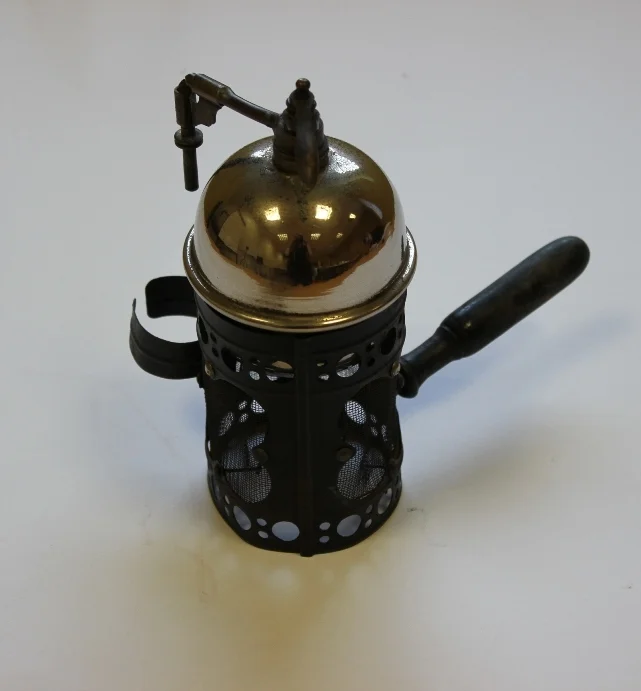This object is an early example of a carbolic acid spray, the first antiseptic, dating to the 1880s. It worked by boiling the water in the top of the main body of the spray so that steam was forced out. This drew carbolic acid from the glass container up through rubber tubing (missing from this example), which mixed with the steam before being sprayed into the air.
In 1865, Joseph Lister used the work of Louis Pasteur and that of Ignaz Semmelweis (a Hungarian scientist who proved that doctors were responsible for transmitting childbed fevers in hospitals) when developing his antiseptic. He realised that there was a connection between microbial production and infection after surgery, and tested chemicals that could kill off germs from patients’ wounds, surgeons’ hands, and surgical equipment.
As a result of the introduction of carbolic acid, the death rate from infection after surgery decreased almost 50 percent to just 15%. Carbolic acid was however very damaging to surgeons’ and nurses’ hands, as well as patients’ bodies. Rubber gloves were invented to combat this by an American surgeon, William Halsted, in 1890.
This along with two further examples of carbolic sprayers are in the Victorian Surgery display in the Medical Science case at the George Marshall Medical Museum.
